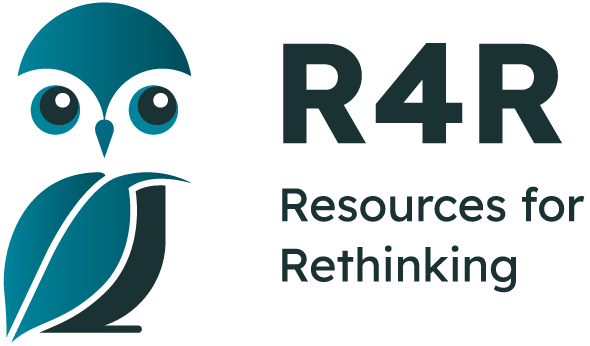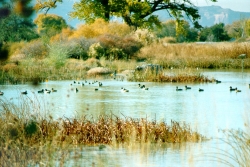- Home
- Tutorial
- Resource Guides
- Focus Areas
- LSF Programs
-
Professional
Development - Review Process
-
A project of LSF

Search for Resources
Description
This hands-on activity is designed to help young students understand the importance of wetland ecosystems. Specific wetland functions are represented by a collection of common household items. For example a sponge is used to illustrate the ability of a wetland to prevent floods. Through the application of a variety of similar metaphors, students visualize in concrete terms how wetlands function and why we need to protect them.
Students will:
- discuss the importance of wetlands
- learn what a mataphor is
- Take turns removing items from a Mystery Metaphor Container
- Explain the relationship between the item and a wetland
- Explore their attitudes towards wetlands.
It is recommended that this activity be used in conjunction with a field trip to a local wetland.
In this fun-filled activity, students learn to appreciate the many important contributions made by our wetlands. Using common household objects as symbols or metaphors for different wetland functions, teams of student compete in a relay-style race that requires their ability to match function to symbol.
This activity is designed in such away that it can be enjoyed indoors or out.
This activity provides a fun-filled way to introduce students to the important contributions made by our wetlands.
Teachers use common household objects to illustrate some of the important contributions these ecosystems perform. Following the demonstration & discussion, teams of students compete in a relay-style race that tests their ability to connect function to symbol.
General Assessment
What skills does this resource explicitly teach?
This resource does not teach skills.
Strengths
- The lesson has great potential for integrating poetry and art.
- The use of the metaphor to compare the wetland functions to everyday objects is a unique and engaging approach.
- Good background information is provided.
Weaknesses
- The resource does not include opportunities for action.
- Examples of poetry or stories on the topic of wetlands which can be used as part of the lesson to spark interest are not included.
- Suggestions to share the work through publication or display are not mentioned.
- A rubric for evaluating the writing of the metaphor is not included.
Relevant Curriculum Units
The following tool will allow you to explore the relevant curriculum matches for this resource. To start, select a province listed below.
- Step 1Select a province
- Alberta
- Step 2Select a grade level
- Grade 4
- Step 3Select a subject
- English/Language Arts
- Step 4Relevant matches
- Comprehension: Text comprehension is supported by applying varied strategies and processes and by considering both particular contexts and universal themes.
- Conventions: Understanding grammar, spelling, and punctuation makes it easier to communicate clearly, to organize thinking, and to use language for desired effects
- Grade 5
- Step 3Select a subject
- English/Language Arts
- Step 4Relevant matches
- Writing: Ideas and information can be articulated accurately and imaginatively through the use of writing processes and an understanding of the author’s craft
- Manitoba
- Step 2Select a grade level
- Grade 4
- Step 3Select a subject
- English/Language Arts
- Step 4Relevant matches
- Language as Power and Agency
- Science
- Step 4Relevant matches
- Habitat and Communities
- Grade 5
- Step 3Select a subject
- English/Language Arts
- Step 4Relevant matches
- Language as Power and Agency
- New Brunswick
- Step 2Select a grade level
- Grade 1
- Step 3Select a subject
- Health Education
- Step 4Relevant matches
- Explore Your World: Diversity and Social Responsibility
- Science
- Step 4Relevant matches
- Explore Your World: Diversity and Social Responsibility
- Social Studies
- Step 4Relevant matches
- Explore Your World: Diversity and Social Responsibility
- Grade 4
- Step 3Select a subject
- English/Language Arts
- Step 4Relevant matches
- Representations
- Grade 5
- Step 3Select a subject
- English/Language Arts
- Step 4Relevant matches
- Representations
- Newfoundland & Labrador
- Step 2Select a grade level
- Grade 2
- Step 3Select a subject
- Science
- Step 4Relevant matches
- Air and Water in the Environment
- Grade 4
- Step 3Select a subject
- English/Language Arts
- Step 4Relevant matches
- Writing & Other Ways of Representing
- Science
- Step 4Relevant matches
- Habitats
- Grade 5
- Step 3Select a subject
- English/Language Arts
- Step 4Relevant matches
- Writing & Other Ways of Representing
- Nova Scotia
- Step 2Select a grade level
- Grade 2
- Step 3Select a subject
- Science
- Step 4Relevant matches
- Science 2: Air and Water in the Environment
- Grade 4
- Step 3Select a subject
- English/Language Arts
- Step 4Relevant matches
- Writing & Representing
- Grade 5
- Step 3Select a subject
- English/Language Arts
- Step 4Relevant matches
- Writing and Representing
- Nunavut
- Step 2Select a grade level
- Grade 4
- Step 3Select a subject
- English/Language Arts
- Step 4Relevant matches
- Comprehend & Respond
- Science
- Step 4Relevant matches
- Life Systems: Habitats & Communities
- Grade 5
- Step 3Select a subject
- Ontario
- Step 2Select a grade level
- Grade 4
- Step 3Select a subject
- English/Language Arts
- Step 4Relevant matches
- Language: Composition: Expressing Ideas and Creating Texts
- Science & Technology
- Step 4Relevant matches
- Matter and Energy: Light & Sound
- Grade 5
- Step 3Select a subject
- English/Language Arts
- Step 4Relevant matches
- Language: Composition: Expressing Ideas and Creating Texts
- Language: Comprehension: Understanding and Responding to Texts
- Prince Edward Island
- Step 2Select a grade level
- Grade 2
- Step 3Select a subject
- Science
- Step 4Relevant matches
- Air & Water in the Environment
- Grade 4
- Step 3Select a subject
- English/Language Arts
- Step 4Relevant matches
- Writing and Other Ways of Representing
- Science
- Step 4Relevant matches
- Habitats
- Grade 5
- Step 3Select a subject
- English/Language Arts
- Step 4Relevant matches
- Writing and Other Ways of Representing
- Quebec
- Step 2Select a grade level
- Grade 3
- Step 3Select a subject
- English/Language Arts
- Step 4Relevant matches
- To use Language to communicate and learn
- Grade 4
- Step 3Select a subject
- English/Language Arts
- Step 4Relevant matches
- To use Language to communicate and learn
- Science & Technology
- Step 4Relevant matches
- Living Things
- Grade 5
- Step 3Select a subject
- English/Language Arts
- Step 4Relevant matches
- To use Language to communicate and learn
- Science & Technology
- Step 4Relevant matches
- Living Things
- Saskatchewan
- Step 2Select a grade level
- Grade 2
- Step 3Select a subject
- Science
- Step 4Relevant matches
- Air and Water in the Environment
- Grade 4
- Step 3Select a subject
- English/Language Arts
- Step 4Relevant matches
- Compose and Create
- Science
- Step 4Relevant matches
- Habitats and Communities
- Grade 5
- Step 3Select a subject
- English/Language Arts
- Step 4Relevant matches
- Compose and Create
Themes Addressed
Ecosystems (5)
- Appreciating the Natural World
- Biodiversity
- Endangered Species
- Habitat Loss
- Wildlife Protection
Sustainability Education Principles
| Principle | Rating | Explanation |
|---|---|---|
| Consideration of Alternative Perspectives | Good | The activity includes discussion of different points of view in addressing the issues. |
Consideration of Alternative Perspectives:
| ||
| Multiple Dimensions of Problems & Solutions | Good | This is a short lesson with emphasis on the environmental aspects of wetlands via metaphors and visualization. Other dimensions of problems and solutions are addressed through the discussion relating to the metaphor mystery container activity. |
| Multiple Dimensions of Problems & Solutions: Effectively addresses the environmental, economic and social dimensions of the issue(s) being explored.
| ||
| Respects Complexity | Good | Complexity of problems will emerge through discussion and discovering comparisons between wetlands and everyday objects. |
| Respects Complexity: The complexity of the problems/issues being discussed is respected. | ||
| Acting on Learning | Poor/Not considered | This is more of a lesson to create awareness through use of metaphors of a wetland. It does not include authentic action experience. |
| Acting on Learning: Learning moves from understanding issues to working towards positive change — in personal lifestyle, in school, in the community, or for the planet
| ||
| Values Education | Satisfactory | |
| Values Education: Students are explicitly provided with opportunities to identify, clarify and express their own beliefs/values. | ||
| Empathy & Respect for Humans | Poor/Not considered | This is not considered in the resource. |
| Empathy & Respect for Humans: Empathy and respect are fostered for diverse groups of humans (including different genders, ethnic groups, sexual preferences, etc.). | ||
| Personal Affinity with Earth | Satisfactory | The activity could take place in or outside the classroom. It is recommended this lesson be taught after a field trip to a wetland. |
| Personal Affinity with Earth: Encourages a personal affinity with -the natural world.
| ||
| Locally-Focused Learning | Good | If the effort is made to visit a local wetland. Also, the post activities- poetry writing and art- can help make the learning relevant to the lives of the learners. |
| Locally-Focused Learning: Includes learning experiences that take advantage of issues/elements within the local community.
| ||
| Past, Present & Future | Satisfactory | A description is provided as background information of what a wetland is but a history of wetlands or a vision for the future are not included in this resource. |
| Past, Present & Future: Promotes an understanding of the past, a sense of the present, and a positive vision for the future. | ||
Pedagogical Approaches
| Principle | Rating | Explanation |
|---|---|---|
| Open-Ended Instruction | Good | This is provided through discussion and experimenting with the mystery metaphor container. |
| Open-Ended Instruction
: Lessons are structured so that multiple/complex answers are possible; students are not steered toward one 'right' answer. | ||
| Integrated Learning | Good | Elements of Language Arts and Science are are incorporated into this resource along with drawing and painting in the extension activities. |
| Integrated Learning: Learning brings together content and skills from more than one subject area
| ||
| Inquiry Learning | Satisfactory | By using the mystery metaphor container students discover and make comparisons between wetlands and everyday objects. |
| Inquiry Learning: Learning is directed by questions, problems, or challenges that students work to address.
| ||
| Differentiated Instruction | Satisfactory | Students work in groups and the open-ended approach could provide for different learning styles. |
| Differentiated Instruction: Activities address a range of student learning styles, abilities and readiness.
| ||
| Experiential Learning | Satisfactory | |
| Experiential Learning: Authentic learning experiences are provided
| ||
| Cooperative Learning | Satisfactory | Students can work in groups during the mystery metaphor activity. |
| Cooperative Learning: Group and cooperative learning strategies are a priority.
| ||
| Assessment & Evaluation | Satisfactory | A copy of the wetland metaphors activity page is available for students and may be used as an evaluation tool. |
| Assessment & Evaluation: Tools are provided that help students and teachers to capture formative and summative information about students' learning and performance. These tools may include reflection questions, checklists, rubrics, etc. | ||
| Peer Teaching | Satisfactory | This may occur during group work. |
| Peer Teaching: Provides opportunities for students to actively present their knowledge and skills to peers and/or act as teachers and mentors.
| ||
| Case Studies | Poor/Not considered | This is not considered in this resource. |
| Case Studies: Relevant case studies are included. Case studies are thorough descriptions of real events from real situations that students use to explore concepts in an authentic context. | ||
| Locus of Control | Poor/Not considered | This is not considered in the core activities of this resource. |
| Locus of Control: Meaningful opportunities are provided for students to choose elements of program content, the medium in which they wish to work, and/or to go deeper into a chosen issue. | ||

